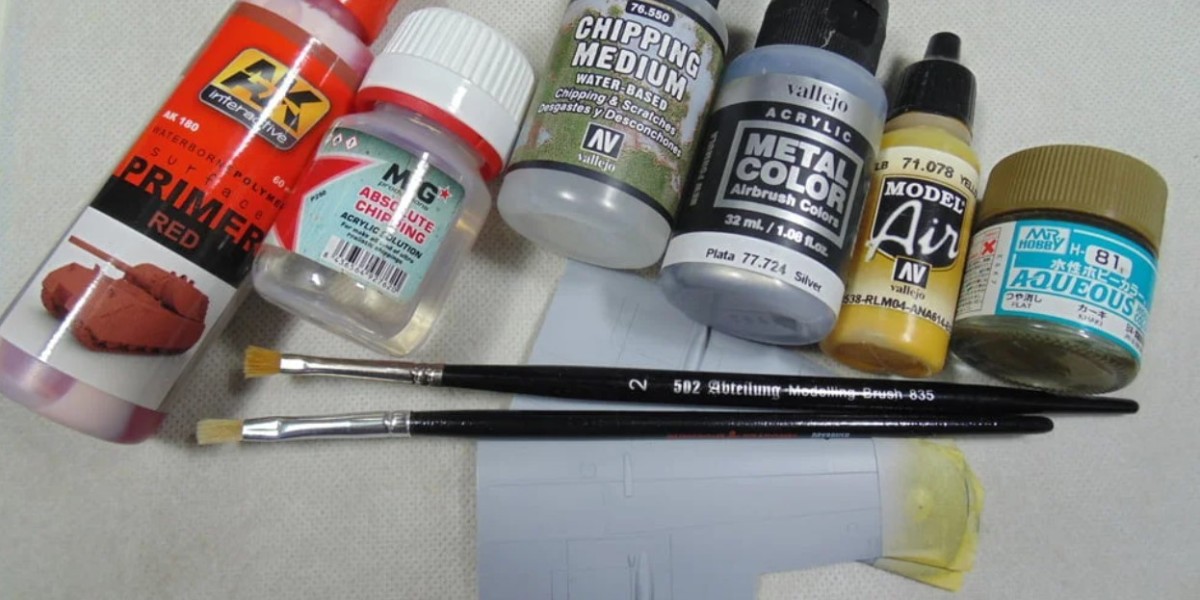When it comes to plastic modeling, theres a step that many beginners might overlook but can significantly impact the final outcome: priming. Applying a primer to your model isnt just an extra step; its a critical foundation for achieving a professional-looking finish. In this article, well explore why priming is essential and recommend some of the best primers available forbest paint for plastic models.
What is Priming?
Priming is the process of applying a preparatory coat of paint (the primer) to a surface before the application of the main paint layers. This step is crucial for enhancing adhesion, improving durability, and ensuring an even application of color.
Why is Priming Essential?
1. Enhances Adhesion
One of the primary functions of a primer is to create a suitable surface for paint to adhere to. Plastic surfaces, especially those with a glossy finish, can be challenging for paint to stick to. A good primer provides a rougher texture that helps subsequent layers bond more effectively.
2. Improves Color Coverage
Primers typically come in neutral shades like white, gray, or black, which can influence the appearance of the paint colors applied over them. By using a primer, you create a consistent base, helping the topcoat achieve better opacity and vibrancy.
White Primer: Great for bright colors, as it enhances their brightness.
Gray Primer: A versatile option that works well with both light and dark colors.
Black Primer: Ideal for darker colors or for models where you want to create depth through shadow.
3. Prevents Paint Chipping and Peeling
A well-primed surface significantly reduces the likelihood of paint chipping or peeling over time. The primer acts as a barrier between the plastic and the paint, providing an extra layer of protection against wear and tear.
4. Fills Imperfections
Most plastic models come with imperfections like seams, scratches, or mold lines. A primer can fill in small gaps and imperfections, providing a smoother surface for painting.
5. Helps with Weathering Techniques
If you plan to weather your model (adding effects like dirt, rust, or wear), using a primer can make these techniques more effective. The primer helps create a base that allows washes and other weathering products to adhere better.
Types of Primers for Plastic Models
Now that we understand the importance of priming, lets look at the different types of primers available and what makes them suitable for plastic models.
1. Acrylic Primers
Acrylic primers are water-based and offer a non-toxic option for modelers. They dry quickly and are easy to clean up.
Advantages: Fast-drying, easy to use, and can be thinned with water.
Recommended Brands:
Vallejo Surface Primer: Available in a spray can or bottle for airbrush application, providing a smooth finish.
2. Enamel Primers
Enamel primers are oil-based and generally more durable than acrylics. They offer excellent adhesion and can be a good choice for models that will be handled frequently.
Advantages: Provides a hard, long-lasting finish.
Recommended Brands:
Testors Enamel Primer: Offers a range of colors and provides a solid base for various topcoats.
3. Lacquer Primers
Lacquer primers are solvent-based and dry quickly, making them ideal for achieving a very smooth finish. However, they require careful handling and ventilation due to their strong fumes.
Advantages: Fast-drying and creates a durable surface.
Recommended Brands:
Mr. Surfacer: A popular choice among modelers, available in various grades for different textures.
Application Techniques for Priming
To achieve the best results, it's essential to apply primer correctly. Here are some tips to keep in mind:
1. Clean Your Model
Before applying primer, ensure your model is clean. Wash it with warm soapy water to remove any mold release agents or oils that may interfere with adhesion.
2. Shake the Primer Well
Always shake the primer can or mix the bottle thoroughly before application to ensure an even consistency.
3. Apply in Thin Coats
When applying primer, use thin, even coats to avoid drips or runs. Hold the spray can about 6-12 inches away from the surface and use a sweeping motion.
4. Allow for Drying Time
Follow the manufacturer's instructions for drying times. This can vary depending on the primer type and environmental conditions.
5. Lightly Sand (Optional)
After the primer has dried, you may lightly sand the surface with fine-grit sandpaper (around 1000 grit) to achieve an ultra-smooth finish. Just be sure to remove any dust before moving on to the next painting step.
Common Mistakes to Avoid When Priming
Here are some common pitfalls to avoid when applying primer to your plastic models:
1. Skipping the Primer Step
Some modelers may think they can skip priming and go straight to painting. This can lead to poor adhesion and uneven coverage.
2. Over-Spraying
Applying too much primer at once can lead to drips and runs. Always opt for multiple thin layers instead.
3. Ignoring Drying Times
Not allowing enough time for the primer to dry can result in smudging or poor adhesion of subsequent paint layers.
4. Using the Wrong Type of Primer
Using a primer not suited for plastic can lead to issues with adhesion and finish. Always choose a primer specifically designed for plastic surfaces.
Conclusion
Priming your plastic models is a vital step that ensures paint adheres properly, enhances color vibrancy, and improves the overall durability of your work. By selecting the right primer and applying it correctly, you can create a solid foundation for your painting projects. Whether you prefer acrylic, enamel, or lacquer primers, investing time and effort into this crucial step will pay off in the quality of your finished model.
FAQs
Do I really need to prime my plastic models?
Yes, priming enhances paint adhesion, improves color coverage, and provides a smoother surface for painting.Can I use any primer for plastic models?
Its best to use primers specifically formulated for plastic to ensure proper adhesion and avoid issues with paint.How do I clean my model before priming?
Wash the model with warm soapy water and a soft brush to remove any oils or mold release agents.What is the best method for applying primer?
Spray primers in thin, even coats from a distance of 6-12 inches, using a sweeping motion to avoid drips.
Our Social Pages:
https://plastic-models-store.com/
https://www.facebook.com/plastic.models.store










